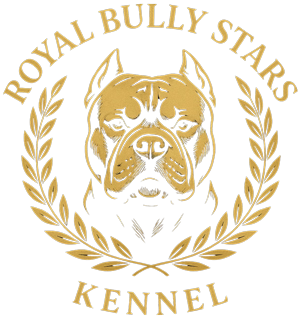Tips for caring for a Pocket Bully – nutrition, exercise, and health
The Pocket Bully is a dog that attracts attention wherever it goes – compact, strong, and full of energy, yet gentle and loyal to its owner. However, for your Bully to be happy, healthy, and long-lived, it requires careful and proper care. Below is a detailed guide on nutrition, physical activity, health, and daily care for a Pocket Bully.
Nutrition – the foundation of health and vitality
Proper nutrition is the most important factor for every dog’s health, especially for the Pocket Bully with its specific build. Their strong muscles require a protein-rich diet that includes meat, fish, and vegetables. The best choice is high-quality food – dry kibble, semi-moist food, or carefully balanced homemade meals.
It is important to monitor the amount of food, as Bullies have a tendency to gain weight. Excess weight can strain their joints and cause health problems. It is recommended to feed them twice a day, in the morning and evening, and strictly follow the daily recommended amount.
What to avoid in their diet?
- Too many carbohydrates and fatty foods
- Sweets and human food
- Bones that splinter easily (chicken, fish)
Instead, occasionally reward them with healthy treats such as dried meat or dog biscuits.
Physical activity – balancing strength and play
The Pocket Bully is not a dog that needs marathons or hours of intense training, but it does require regular physical activity. Daily walks, playtime with the owner, and occasional runs are excellent ways to burn excess energy and keep fit.
The ideal combination is two daily walks lasting 30–45 minutes, along with shorter play sessions at home or in the yard. It is important not to overexert them, especially at a young age, since excessive effort can affect the development of their joints and bones.
Mental stimulation
In addition to physical activity, Bullies also require mental challenges. They are intelligent and love to learn, so you should provide them with interactive toys, basic commands, and new tasks. This prevents boredom and helps develop a stable temperament.
Health and prevention
Like every breed, the Pocket Bully requires regular visits to the vet. Vaccinations, deworming, and routine check-ups are essential for a long and healthy life. Our advice:
- Regular vaccinations according to age
- Preventive treatment against internal and external parasites
- Monitoring body weight and condition
- Checking joint and muscle health, especially in growing puppies
Bullies generally have good genetics, but due to their strong build, it is important to pay attention to joints and hip dysplasia. That is why it is desirable for puppies to come from kennels that carefully select parents and perform health testing.
Coat care and hygiene
The Pocket Bully’s coat is short and easy to maintain. Occasional brushing removes dead hair and stimulates skin circulation, while bathing once a month or as needed is sufficient. During grooming, don’t forget:
- Regular nail trimming
- Cleaning ears and eyes
- Brushing teeth or giving special dental treats
All these small routines contribute to your dog looking great and feeling healthy.
Pocket Bully and daily life
The most important part of care is not just food and walks – it is love and attention. The Pocket Bully loves being around people. It doesn’t like spending time alone and always wants to be part of the family. If you give it enough time and attention, it will repay you many times over – with loyalty, love, and endless devotion.
Conclusion
Caring for a Pocket Bully is not complicated, but it does require consistency and dedication. Proper nutrition, moderate physical activity, regular vet check-ups, and lots of love are the recipe for a happy and healthy dog. If you provide all of this, your Pocket Bully will become not only a pet, but a true family member who brings joy every day.
If you want to learn more about our dogs and puppies, visit our Puppies for sale page or contact us through the Contact page. We will be happy to help you find your perfect Pocket Bully companion.
